- Getting around Lijiang. Dont stay in the Old Towns more than 2 days, there is nothing to do. KRISS Oct 9, 2013 05:46
- 2013 Beijing Temple Fair BENNYLAU Feb 26, 2013 03:29
- Malaysian traveling from KUL - LAX vis Shanghai PVG ZATI_DY Jan 3, 2013 20:15
Pearl of the Orient
- Views: 8221
- |Vote: 0 0
- |Add to Favorites
- |Recommend to Friends
One of China’s special economic zones (SEZ) and the mainlands gateway to Macau, Zhuhai would have to be one of China’s best kept secrets. In less than 20 years Zhuhai has grown from nothing more than a sleepy fishing port in the western region of the Pearl River Delta into a well groomed city of substance. With sub-tropical climate, clean environment, well planned urban development, beautiful parks and gardens and miles of palm lined waterfront esplanades, mountain parks and hot springs, it’s a great place to retreat and relax.
Plans are also afoot to build the Hong Kong – Macau – Zhuhai Bridge, a combination of bridges and tunnels, the second longest of its kind in the world, that will finally connect Beijing to Hong Kong via Macau. The Jingzhu Expressway, the 2000 km long trans-national transport corridor linking Beijing to Zhuhai via Shijiazhuang completed in 2004, terminates here. Zhuhai would also be the final stop on my mother’s second visit to China and a reunion with two of her Beijing University classmates after almost 20 years.
We were met at Guangzhou airport by my mother’s friend, her husband and their 12 year old daughter. It was dark when we arrived at the Paradise Hill Hotel about two hours later. I awoke next morning to get my first glimpse of Zhuhai from our hotel window. Outside the golden wattles, native to Australia, were in full bloom against a backdrop of granite boulders. I immediately felt at home.
Our hosts collected us from the hotel and took us to one of the most popular Yum Cha restaurants at a famous old hotel overlooking the water. A large variety of small dishes are served from a trolley direct to the table. Yum Cha is an old Cantonese tradition of a late leisurely breakfast. It was a great way to start our visit and get to know our family better before heading back to their apartment. They had recently acquired a second apartment in the same building on the floor below and this would be our home for the week we stayed with them.
After brunch we took a brief tour of Zuihai stopping first at the end Qing Lu the 10km long waterfront esplanade known as Lover’s Road overlooking Macau. We took a few photos and drove back to our host’s apartment. They had moved to Zhuhai more than twelve years ago making it their home. Both of them are very successful English teachers – the wife teaching in a small but prestigious middle school while her husband is Deputy Principal of the Junior campus of Number 2 Middle School. We had a tour of all three campuses and when school resumed later in the week I taught an impromptu class for my mother’s friend. We was very impressed with their level of understanding, oral abilities and behaviour especially as they have little contact if any with foreigners.
On our second day we took a long drive south to one of the beaches, passing through new industrial estates built on the very poor quality soils of the delta area. Several long bridges span the tributaries of the huge Pearl River Delta. Crossing a causeway where land reclamation is underway the road enters some well wooded hills behind the beach. Fifteen minutes later we arrived at the shady car park behind the beach. Pandanus and Beach Oaks or Casuarinas offered great shelter from the hot sun. The entrance fee of Y30 each covers the use of the shower and changing facilities. Public transport to the beach is available.
The wide sandy beach about two kilometres in length was contained between large granite outcrops at either end. A good swell rolled in and a couple of fishing boats were working not far off shore. The large change room facility was half hidden under the canopy of trees and tables, chairs, umbrellas and small tents were available for hire. We set a table and chairs under a shady pandanus and enjoyed a late lunch of sweet potatoes, boiled eggs and boiled peanuts before taking a plunge. It had been more than a year since I had last been to the beach in China and this was the first time I had actually seen any surf.
In typical Chinese fashion a patrolled swimming enclosure was cordoned off at each end of with long lengths of rope with floats at regular intervals with another running parallel to the beach about 70mts offshore. I guess it gives most people a sense of security but for me it was a little frustrating. While the waves didn’t look too big there was quite a strong undertow. Add to this an ebb tide. I thought it best to err on the side of caution and stay within the enclosure but each time I kicked off to catch a wave I ran the risk of kicking the ropes or floats which were encrusted with small razor sharp mussels. The rope from the beach continually swept sideways back and forth in the surging water and on one wave I grazed the inside of my leg on several floats as they swept into my path. Despite the slight injuries it was a lot of fun and well worth the effort and I am grateful to our hosts for making it possible. It may be the only time I ever surf in China.
Zhuhai’s hilly terrain divides the city into three main districts. Gongbei in the south is the main tourist area with hotels adjacent to the border gate to Macau and location of another unique style of dining. Narrow streets of small restaurants are lined with stalls selling every kind of fresh live seafood imaginable, including Australian lobsters. Just to take a stroll was entertaining but we were there for lunch. We chose what we fancied for our meal – it was weighed and bagged and paid for – and staff from one of the restaurants followed us about on our foray to carry our purchases. When we had all we thought we could eat we returned to the restaurant where the dishes were prepared of just Y10 each. Add a dish or two of vegetables and a drink and we had the perfect meal of fresh fish, crabs, prawns, and shellfish.
Jida to the north-east encompasses Jiuzhou harbour, with a container port and the ferry terminal to Hong Kong and Shenzhen, the beautiful Haibin Gongyuan or Seaside Park, Zhuhai Amuzement Park and the Zhuhai Holiday Resort. The statue of the Pearl Lady standing in the sheltered Xianglu Bay beneath Haibin Gongyuan (Seaside Park) is a major landmark and attracts a lot of visitors. Walking trails through both Haibin Gongyuan and Shilingshan Gongyuan are leisurely and offer great views over the city and the coast from their peaks.
Xiangzhou to the north is cut off by a natural barrier of granite boulder strewn hills. The coastal esplanade, Haibin Beilu gives access to the east and in the west the 274 metre long Banzhangshan tunnel cuts through the hills. Just off shore lies Yeli Island which shelters the old harbour with an interesting flotilla of water craft that put to sea throughout the day. On the flats beneath the bridge, women worked with skill and speed to cement oysters onto lengths of green rope which were then placed back in the tidal waters of the bay. A group of young men in army fatigues were doing drills in the car park next to the ‘floating’ concrete seafood restaurant off the island. I discretely caught them in my camera sights but not before they had us in their rifle sights as we approached. They were smiling and made quite a joke of it as I put my hands up in mock surrender and feigned being shot.
It was hard to find anything that hinted at the once sleepy fishing port except in the Xiangzhou district where older narrow tree lined streets were home to small shops, restaurants and seafood processing warehouses. A commercial and shopping district is nestled beneath Fengboshan Gongyuan backing onto the narrow streets of the waterfront blocks. Below the park just off Fenghuang Beilu is the Memorial to the Martyrs Monument. Zhongshan University’s beautiful Zhuhai campus boasting the longest classroom building in Asia at 500mts long is situated on the northern outskirts of the city overlooking the water.
One of China’s modern leaders, Dr Sun Yat Sen was born in 1866 in the village of Cuiheng, just 33 kms from Zhuhai, and went on to lead an uprising against the last of Qing dynasty in 1911. His family home is open to the public although the original house was replaced in 1892 but he spent a few years here with his parents after it was built. He was educated in Hawaii, funded by his wealthy older brother, founded of a party that eventually became known as the Guomindang or Nationalist. He was eventually self exiled in Japan where he married the much younger Soong Qing Ling the second of the famous Soong sisters. He died in 1925 with much of China still controlled by the warlords but the Guomindang was well established in the southern provinces.
When my mothers other classmate joined us later in the week we headed south again but this time to an historic fishing village in the delta which was the home of Su Zhaozhen one of the leaders of the revolution who worked along side Sun Yat Sen. His family home is also open to the public and a bust of the man stands proud in the courtyard. Qi'ao village has changed little, with small traditional courtyard homes of brick and stone and tile, linked by narrow lanes and walls of oyster shells. A temple sits on one side of the square, the largest open space in the village which is partly shaded by one huge tree.
In 1832 British ships invaded the island hoping to establish a base for smuggling and launching further invasions. After plundering and occupying the island for a short period of time several attempts were made by the villagers to expel them and they were eventually successful. With compensation money paid to them, the village of Qi’ao built a 2000mts long stone paved road and a memorial archway to celebrate the success of their historic battles.
To the east of the village a granite strewn hill rises to overlook the Pearl Sea. A park and lookout on the peak overlook pretty sandy coves between small rocky headlands. We were told that Hong Kong was out there and can be seen on a clear. But it was not a clear day. We only saw a couple of ships passing by. While it is some distance from the coast these days, the area is a maze small channels and fish breeding ponds. Restaurants on stilts have been built over these ponds and offer another unique dining experience out in the middle of nowhere and I do mean nowhere. One of the specialties is whole chicken traditionally baked in clay although they have now discovered aluminium foil. The chickens are wrapped and placed in the ground and covered with hot coals for several hours. The result is delicious.
We dined once again on fresh seafood and chicken washed down with a cold beer in the cool shade of the bamboo stilt restaurant. While tour buses do find there way out here we were spared - all the other visitors that day were small groups in private cars. Ironically we were not the only foreigners that day enjoying this quaint outdoor dining. On the way back to Zhuhai that afternoon we stopped beside the straits between Macau and the mainland which is packed with fishing vessels. In years gone by it was heavily guarded by patrol boats but these days the atmosphere is much more relaxed and locals boats cross freely from one side to the other.
The newer Industrial Parks to the south and north of the city are spacious, tidy and bursting with international brand name business houses. Tourist bus lines traverse the city making it easy to get to most major tourist attractions. One of them of interesting of these is the replica of Beijing’s Winter Palace the New Yuan Ming Yuan Palace located at the foot of Mt.Dashilin in the west of Gongbei district. Details of the original palace, burned down by the eight allied forces of the West during the late Qing Dynasty have been faithfully replicated by nearly 2000 skilled artisans and craftsmen, under the careful oversight of literature and history experts.
Zhuhai’s prosperity is tangible. Wide well planned, tree lined avenues and esplanades join the three districts together. While new construction is under way it is not as apparent or rampant as in other parts of the country. Cars and buses are newer, traffic is not congested and driving is comfortable. Dangerous and unroadworthy vehicles so prevalent in other cities have been banned from within the city limits. Its’ clean, green and spacious and with lots of parks and gardens you have a sense of a relaxed almost holiday atmosphere. A real pearl in the Pearl River Delta.




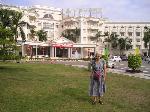
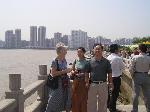
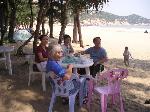
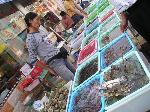
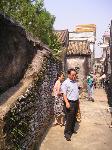
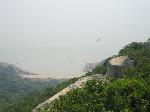
 Copyright © 1998-2025 All rights reserved.
Copyright © 1998-2025 All rights reserved.